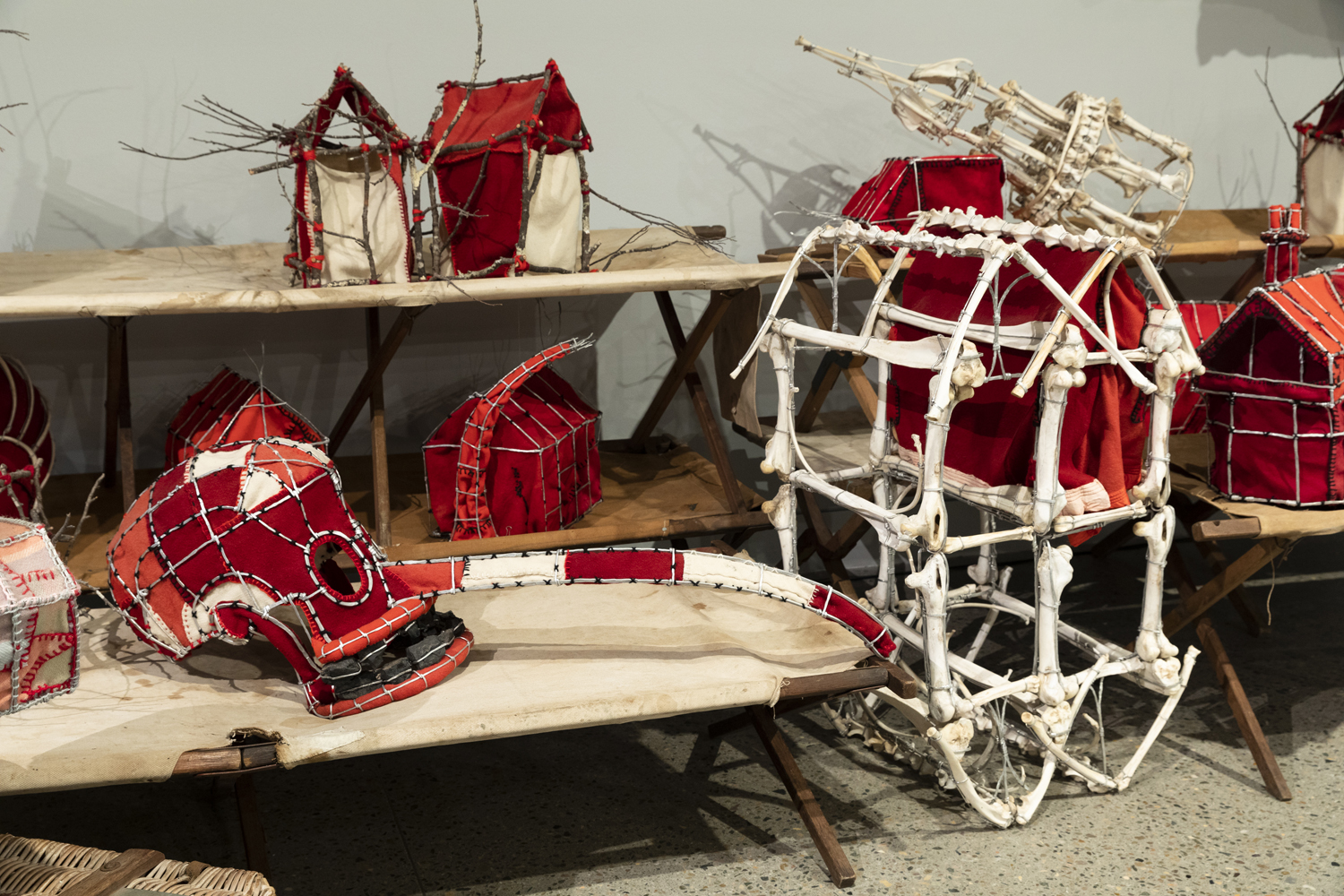25 June 2022 to 28 August 2022
Artists Alison Clouston & Boyd are based in Bundeena in the Royal National Park in southern Sydney. Musician, composer and sound artist Boyd and visual artist Clouston, have collaborated over many years to create immersive sound and sculpture installations, for galleries and alternative sites, both inside and out in the landscape. They bring their close observations of the natural world into a poetically charged relationship with technology to examine our human place within the rest of nature.
They explain: “We have been making work about trees for decades now, inspired by them and by the human philosophies, science and stories around them. Trees are vulnerable not just to land clearing and logging but now most urgently to climate change. Climate change and the extinction crisis affect everything we do. We sense that art might nurture the imagination and compassion we need for positive change in our relations to the rest of nature. And so we invite participation from the diverse communities in which we are privileged to work, currently on Gandangara, Dharawal and Dabee Wiradjuri lands.”
Clouston & Boyd’s new exhibition developed for Hazelhurst is titled Delving & Branching. Delving suggests what roots do – to go searching under the earth for good things, nutrients and water. It also means to research, to look deeply into a question. Branches similarly radiate outward, but up into the light.
The exhibition features three series of works, the largest of which focuses on a 20 metre native Cypress tree salvaged from Wiradjuri country after the Black Summer bushfires of 2019/2020. It becomes the centre of an installation and ceremony with community participation, a recorded soundtrack, and regenerating seedling trees.
Dhalawala, on this country 2022 is about connecting people and places, humans and the environment, while recognising the very real threat of climate change in our shared world. Centred around a 20-metre native cypress pine from Wiradjuri Country that was burnt in the 2019/2020 Gospers Mountain bushfire. The base of the tree is surrounded by a network of hammered metal which imitates mycorrhiza beneath the ground, branching out and connecting the mother tree to local species of native cypress seedlings.
The soundtrack features dawn and dusk choruses recorded on Wiradjuri and Dharawal lands, words and song in Wiradjuri and Dharawal languages that reference plants, the forest and effects of bushfire, and a choir singing in Latin (the language of science, botany, Colonialism, and worship).
Wreath 2019 intimates the end of the age of coal. The work evokes the ghosts of forests of the Carboniferous epoch, which formed the world’s coal 260 to 290 million years ago. The work was originally installed at the Coal Loader in North Sydney, at the site where ships once unloaded coal to power the growing city of Sydney (now the Coal Loader Centre for Sustainability), a memorial to the coal beds beneath the earth that were once forests. The soundtrack (excerpt on the Wreath video) is composed from recordings of the microbats that still inhabit the city’s hollows, crickets, creaking trees, a tawny frogmouth performed on contrabass clarinet, and the songs of dingoes that persist on the periphery of urban development.
Encampment 2022 is composed of a number of existing works that consider ideas around home, nature as a site of loss, of solastalgia, yet also of regeneration and pleasure. The red wool that features throughout the artists’ work is associated with warmth, security, a home in the landscape, whilst inferring the opposite – homelessness and the precariousness of our home on planet Earth.
The video work Tree Change 2015 is a reflection on unsustainable housing development. The additional video component presents documentation of works, with related performances and soundtracks.
A soundtrack for Dhalawala is available to read or download, along with the score for the choir component.
View the score for Arboresco – created for a performance by the Eclectica Choir Bathurst and recorded in the artwork Dhalawala, on this country 2022.
 | This exhibition was supported by Sutherland Shire Council and the NSW Government through Create NSW. |
|---|







